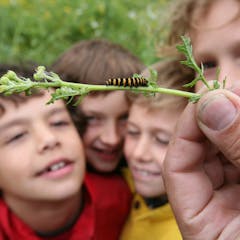
Articles on Climate change education
Displaying all articles

Sparking global momentum and energy in young people through climate education can go a long way to addressing climate change now and in the near future.

In a new study, teachers spoke about the difficulties of teaching young people about climate change without adding to their fears.

School systems need to wake up from ‘business as usual’ learning. Teachers can draw on terror management theory in their work on the front lines with students navigating the climate crisis.

‘Eco-champion’ teachers face barriers in implementing climate change education. Communities and school boards can find inspiration to support them from boards with bolder climate commitments.

A comic aimed at high school students looks at the ways people have adapted to climate change in five countries.

More of the curriculum is devoted to climate change, but it’s still not presented holistically. Teachers also need more training and resources to help them prepare students for a changing climate.

Researchers and educators with the Climate Action Childhood network are generating responses to climate change alongside young children.

Children often aren’t aware of how much has been lost in recent generations.

Some children and youth find the effects of climate change are traumatic. Taking a trauma-informed approach to education can nurture resilience.

Peatlands have been central to how northern European folklore has explored fear and a sense of the supernatural for hundreds of years. Their persistence is also key to slowing down climate change.

University experts are well placed to equip students with holistic climate knowledge and help teachers cover a subject that’s neglected by the Australian Curriculum.

Picture this change: Through collaborative garden networks, teachers, schools, children, community partners and universities inspire real learning and transformation for a more sustainable world.

After Hurricane Sandy, educators in New York City partnered with environmental and governmental organizations to put youth at the centre of preparing for risks and hazards in their school buildings.

Earth-centred children’s programs that seek to build ethical partnerships with Indigenous communities have an important role in learning about weathering climate change.

A filmmaker, her students and community partners create a multi-platform documentary and study guide to teach swamp literacy and care through a trip into the Everglades.

We’re running out of time – so we can’t leave it all to Greta Thunburg and David Attenborough.

In these divided times, young people are uniting to claim a political platform and fight climate change.

Climate change is such a big problem it’s almost impossible for us to really understand. We need artists to mobilise on a huge scale to render the problem comprehensible.

There are three things the new head of the IPCC can do now to help people understand climate science.

Across the globe, we are experiencing rapid changes to our environment and social structures. Climate change, population growth, and social unrest are causing ever increasing problems. The rate of change…
